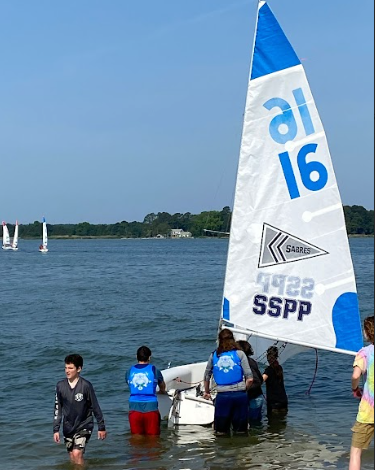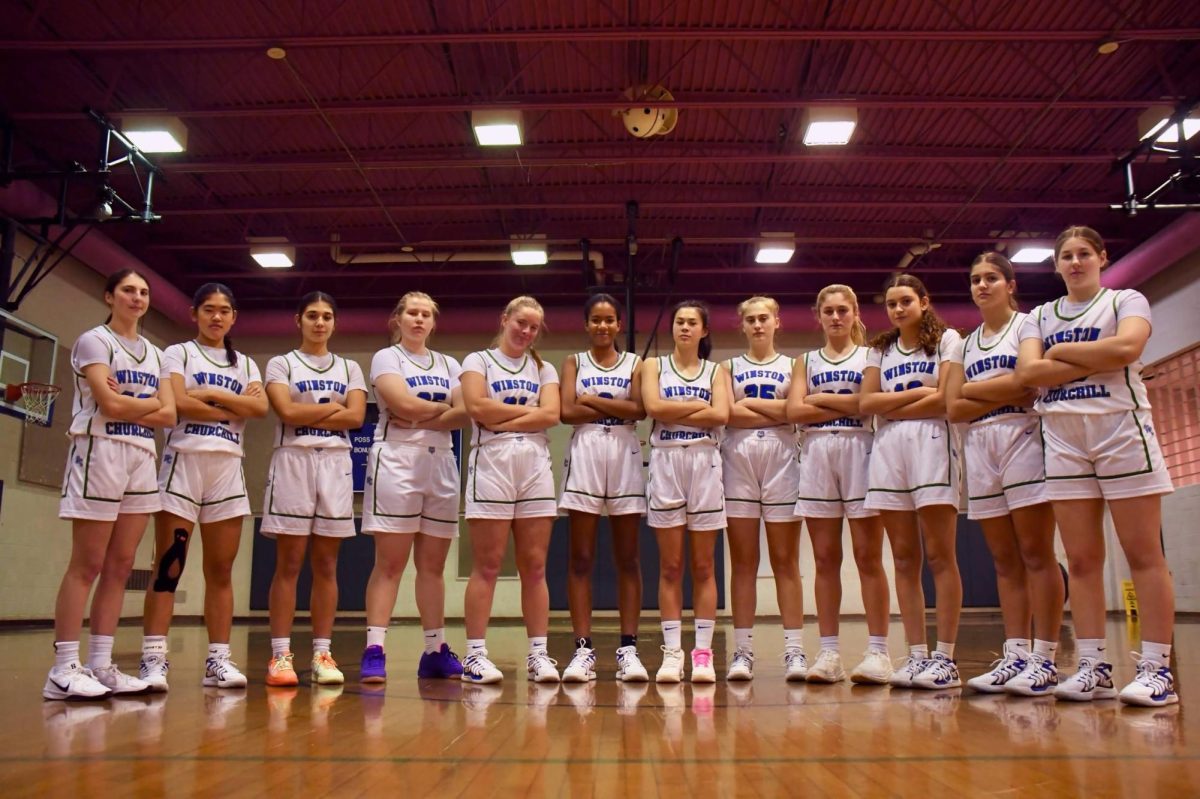
When thinking of sailing, one might imagine the wind’s breeze on their skin, facing the vast ocean or lounging on a large deck with a drink in hand. However, sailing is far from a glamorous and easy sport. It is a challenging, competitive activity requiring significant technical skill and understanding of tactics. The WCHS sailing team has been competing for years.
“[While sailing,] you’re managing a lot, and trying to play up risks,” WCHS senior and team captain Jack Brinsfeild said. “It’s like a game of poker on the water. Am I willing to try to commit to this thing? Am I willing to bet that this other person will do what I think they will? There’s this sort of complexity that builds up and makes it interesting because you’re wondering: how can I get the best result from this?”
The sailing team is mainly organized outside of school, with its club based at WCHS. They operate with DC Sail, the Maryland sailing organization that organizes races, gives out scholarships, provides equipment such as wetsuits and lends out their boats for races. High school sailing is a two-season sport, with competitions in the fall and spring of each year.
“High school sailing typically begins a week or two into the school year,” Brinsfeild said. “It then goes into November, but then at a certain point it gets really cold, so we stop for the season. But, there are still a lot of winter sailing events.”
Typically there are two to five races per regatta, and all the different sailing teams race against each other to the finish line. Every time a race concludes, the team members are swapped out for the next race in the same regatta so they can rest.
“In sailing regattas, teams are organized in groups of two,” WCHS junior Taniola Tobin said. “There is the skipper, who has command of the boat and handles the main sheet and tiller [the lever used to steer the boat], and there is the crew, who is responsible for balancing the boat and the weight distribution on the boat.”
Sailing is a full-time sport that requires commitment. The team meets three times a week during the season. The roundtrip commute and the four-hour practices add up to approximately six hours every time the team meets. Practices consist of learning and practicing sailing although, due to the large time commitment, the team helps each other study and stay ahead academically.
“If we aren’t doing practice, we usually hang out on the docks and help each other study,” Tobin said. “I do enjoy sailing, especially at a regatta, because the competitive environment is nice. It’s nice to be out there with others who enjoy sailing too. In general, sailing is fun — you get to feel the wind, and being on the water is always nice and relaxing, too.”
Arguably the toughest part about sailing is being able to adapt. With unpredictable wind, troubles with communication and adapting to the variability of the weather conditions and other teams, the sport is far from easy.
“If you’re crew, it’s about learning how to steer the boat, handle it and read the water,” Tobin said. “So if there’s like dark patches in the wind, a lot of things you need to know is that the wind is coming with calculator time, or like the weight values and how to distribute your weight correctly. But it’s a two-person sport and you have to be able to cooperate with your teammate. If you can’t, it can lead to many drastic consequences.”
Despite sailing being a tough and competitive sport, it has a lot of positive aspects that outweigh the stressors. The teamwork, camaraderie, competitive atmosphere and exhilaration of sailing at full speed make it an enjoyable sport.
“There’s a few moments where I’d be able to pull a very complex maneuver and be able to sneak inside a couple of boats when rounding a mark,” Brinsfeild said. “And there’s some sort of thrill to being able to pull off those maneuvers and those tactics. That’s what I like about the sport.”








